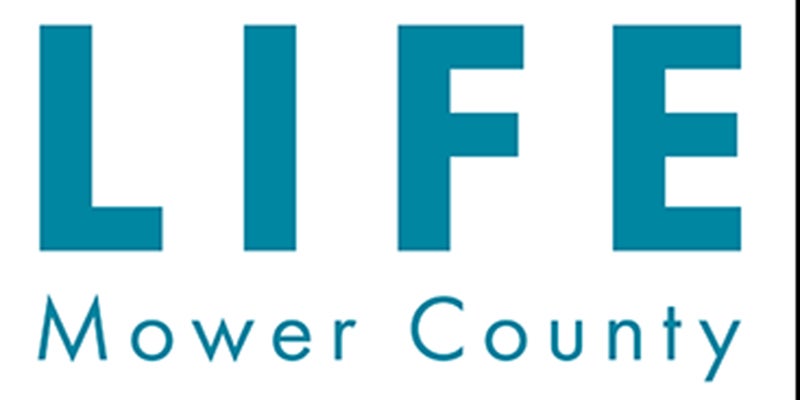Al Batt: Buttering that bread
Published 5:37 pm Tuesday, September 12, 2023
|
Getting your Trinity Audio player ready...
|
Echoes from the Loafers’ Club Meeting
I’m in a rut. Sometimes I wonder what I’m doing here.
Oh, yeah?
Do you ever wonder that?
Sure, I wonder what you’re doing here, every day.
Driving by Bruce’s drive
I have a wonderful neighbor named Bruce. Whenever I pass his drive, thoughts occur to me. I’d gotten a buttery spread with a meal. I grew up on a dairy farm. My father wanted real butter with every meal and ours came from the Clarks Grove Creamery. In 1899, Steele County declared itself the butter capital of the world, with 24 creameries at one time. A French chemist created margarine while seeking a prize offered by Emperor Napoleon III. He developed a process that turned beef tallow and milk into a spread tasting like butter; it was called oleomargarine, known as oleo or margarine. American oleo manufacturing began a few years later. In 1885, Minnesota prohibited the production and sale of oleo. Governor Lucius Hubbard announced that sales of “oleomargarine and its kindred abominations” had been halted. A federal law enacted in 1886 recognized margarine as a legal product subject to taxes and regulation.
In 1891, Minnesota dairy organizations convinced the legislature to pass a “pink law” allowing oleo to be manufactured and sold in Minnesota, but it had to be colored pink. In 1898, the U.S. Supreme Court declared pink laws unconstitutional. Dairy producers argued that margarine was an unappealing white and its producers shouldn’t be allowed to artificially color their product a butter-like yellow. Dairy producers scored a victory in 1902 when the federal government enacted a law imposing higher taxes on yellow margarine than on white margarine.
In 1913, Minnesota’s legislature approved a revision that stated all oleo manufactured and sold in the state had to be 55% white. Oleo producers packaged white margarine with packets of artificial food coloring for consumers to knead in by hand. Oleo mixed with a small percentage of dairy butter—called butterine—became popular.
Price worked in margarine’s favor. It’s a misdemeanor to pass off margarine as real butter in Iowa.
A purple cow and
the weather rock
“Purple Cow” is a poem written by Gelett Burgess in 1895. He wrote: “I never saw a purple cow; I never hope to see one; But I can tell you, anyhow, I’d rather see than be one.”
Put a weather rock in your yard. It’s a dependable forecaster. If the rock is wet, it’s raining. If the rock is flying, the wind is blowing. If the rock casts a shadow, the sun is shining. If the rock is difficult to see, it’s foggy. If the rock is white, it’s snowing.
Ask Al
“How can I tell if it’s an extended car warranty scam?” If your phone rings, it is.
“Why did castles have a moat around them?” So they wouldn’t have so much lawn to mow.
“Why do some mothers dress baby boys in blue and baby girls in pink?” Because babies can’t dress themselves.
“Why did April 1 become so famous?” It’s the only day between March 31 and April 2.
“When can three elephants stand under one umbrella and not get wet?” When it’s not raining.
Nature notes
I have to look at a chickadee. It’s my favorite bird. If you see a bird, stare at it. It’s an easy way to achieve an enhanced existence. I don’t have a least favorite bird (all of them are lovely), but another that brings me great joy to see or hear is the wood thrush. It flies 200 to 300 miles during a nightly migration, yet it’s referred to as a chunky songbird. Its haunting, flute-like “Frito-Lay” song demands I stop and listen.
The sky was electric. A river of birds stretched across it. A cloud of feathers flew over—a flock of pelicans beautifying the air. It was a glorious sight and an amazing sound. On a windless morning, I could hear the wings of the pelicans. American white pelicans look big enough in the air to have been reported as UFOs. Closer to the ground, I saw messy blue jays in a molt. None of them preferred a chocolate molt. Their heads were featherless, making them the young and the crestless.
In this country, a vulture is sometimes called a buzzard. In much of the rest of the world, a vulture is a vulture and a buzzard is a hawk. The interstate highway system is thought to have increased roadkill, which allowed the turkey vulture to extend its range northward.
Meeting adjourned
“Be kinder to yourself. And then let your kindness flood the world.”—Pema Chodron.




